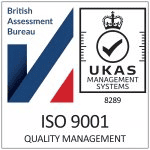

Network Rail wished to undertake First in Class and Driver Confidence running of ETCS enabled vehicles at the RIDC Melton (RIDCM) test track, whilst leveraging the laboratory/technical assets available at the ERTMS National Integration Facility (ENIF).
ETCS lineside and laboratory assets are being supplied by INFRASIG in order to enable testing at RIDC. INFRASIG requested Vertex to utilise their background knowledge of ENIF Operations (Vertex having supplied the Safety Case to enable ENIF Operations on the Hertford Loop and subsequent amendments to enable L3 Hybrid, COMPASS and multiple-vehicle operations) in order to demonstrate safe operation of demonstrations at RIDCM whilst ‘controlled’ from ENIF.

Vertex provided a Safety Case Addendum to INFRASIG, in order to enable testing to be conducted from ENIF, with vehicles operating on RIDCM infrastructure. This Safety Case Addendum was submitted to a NR Safety Review Panel (SRP) in order to gain approval for ETCS testing to commence at RIDC.
Vertex employed the following competencies during these works:
Vertex utilised its extensive knowledge of the existing ENIF suite of safety documents in order to minimise the amount of rework required. This included interrogating the existing Hazard Log in order to extract relevant hazards.